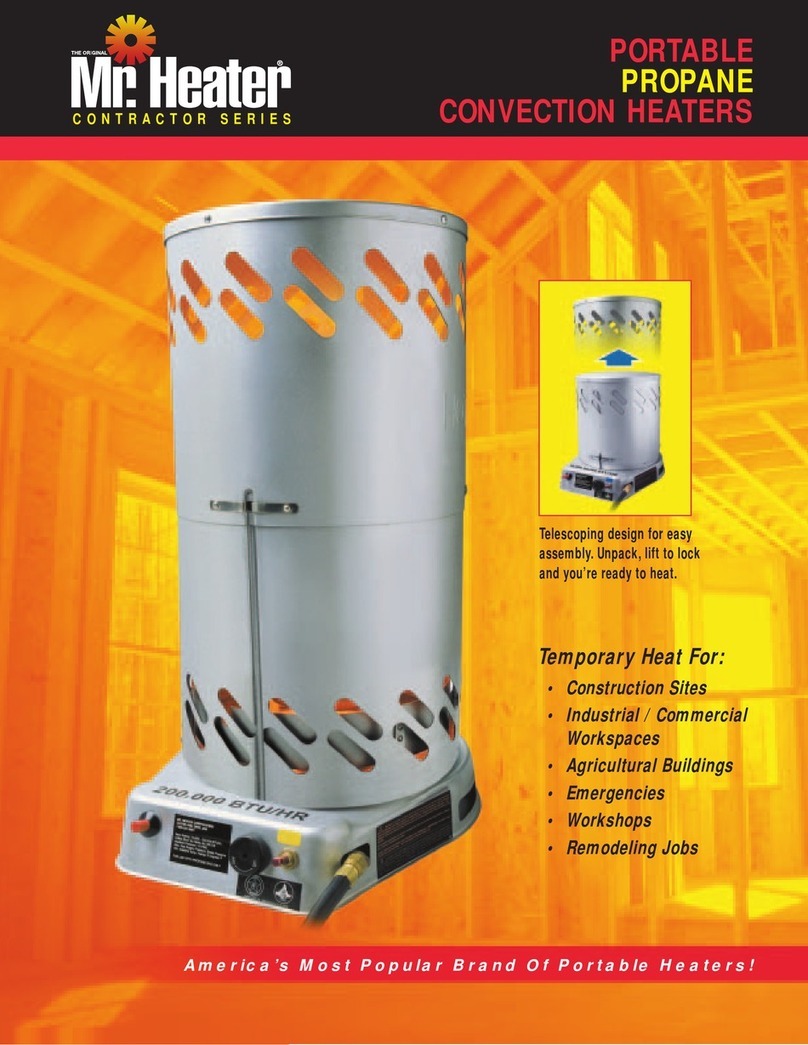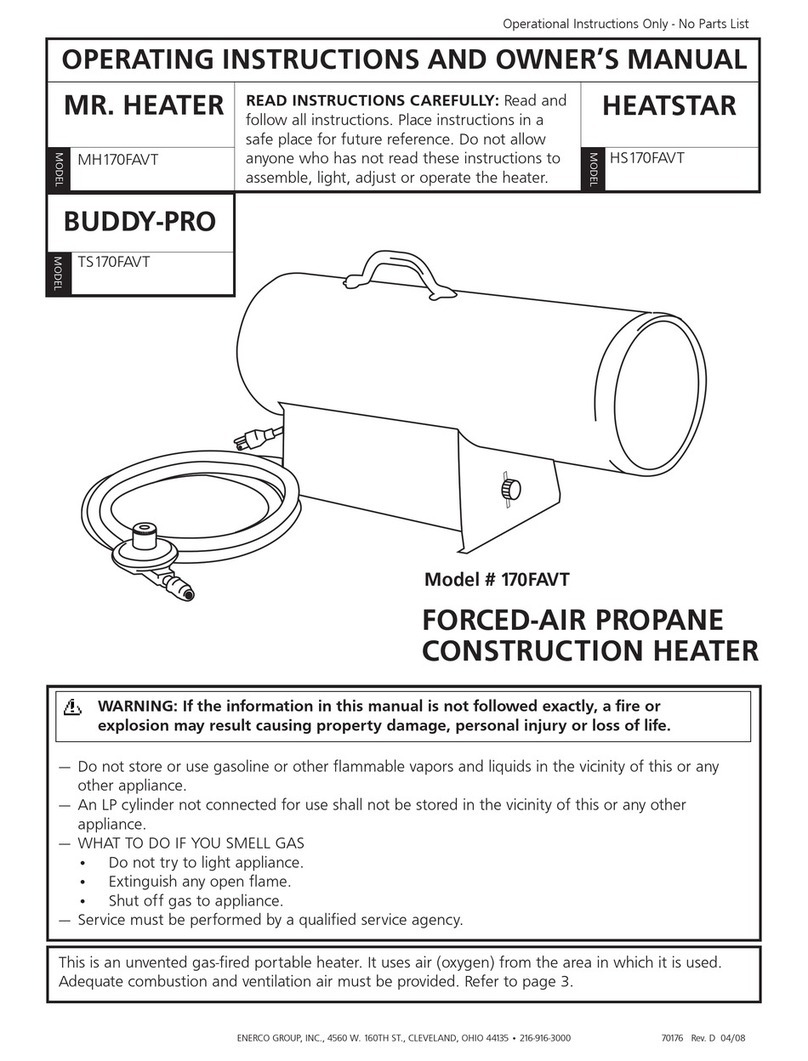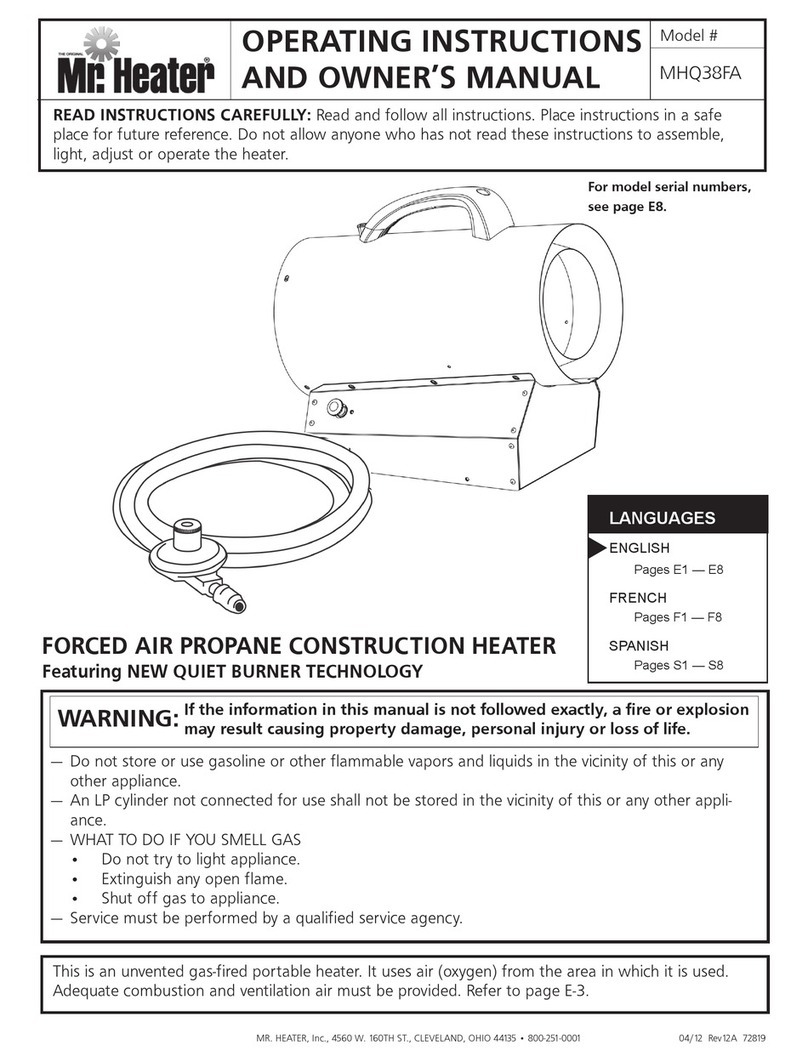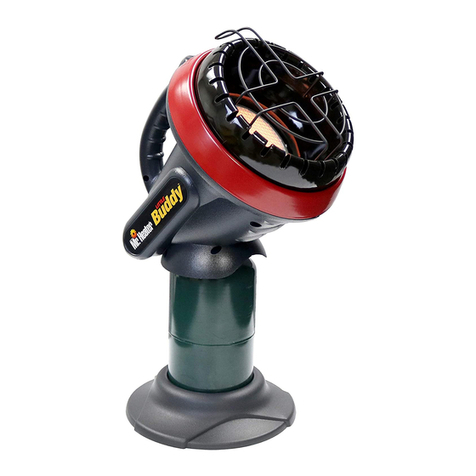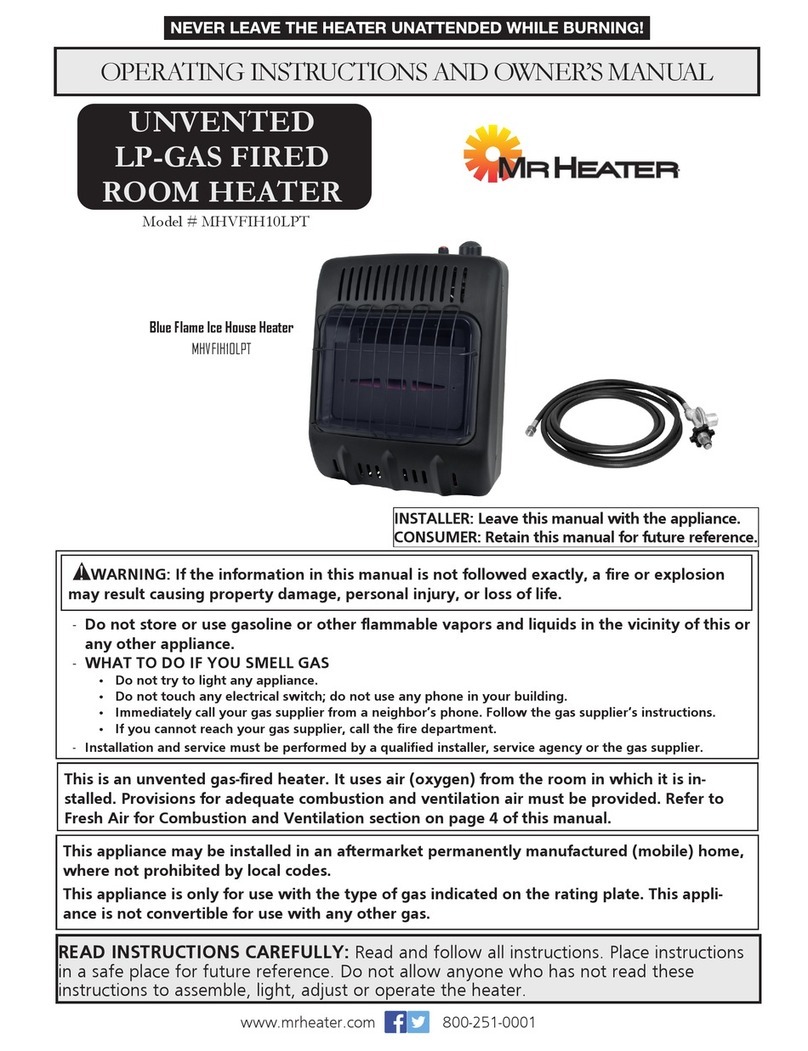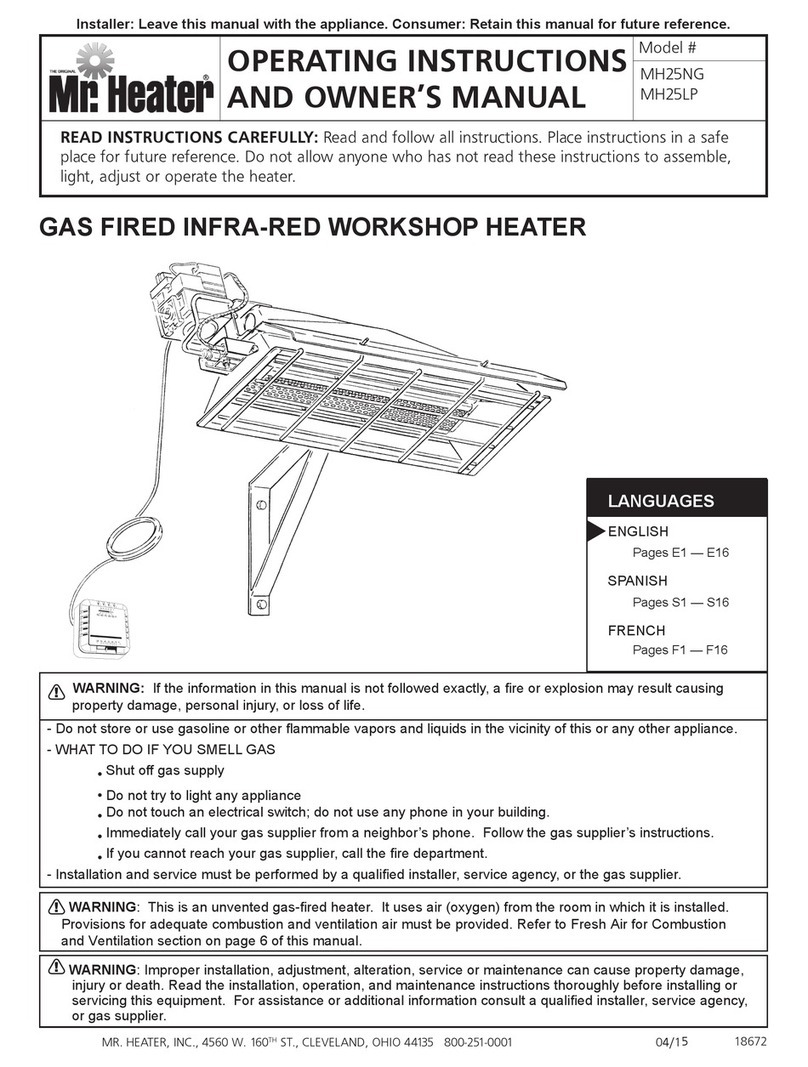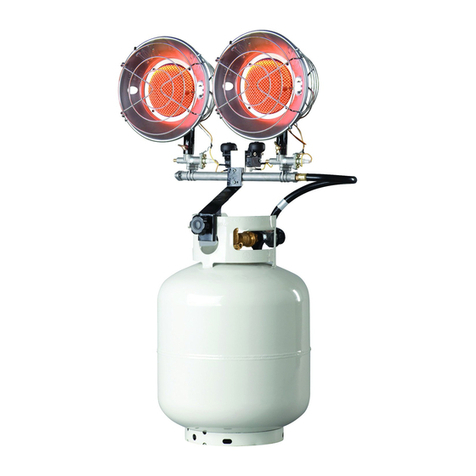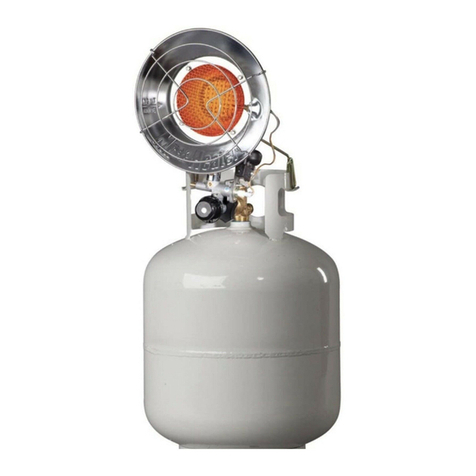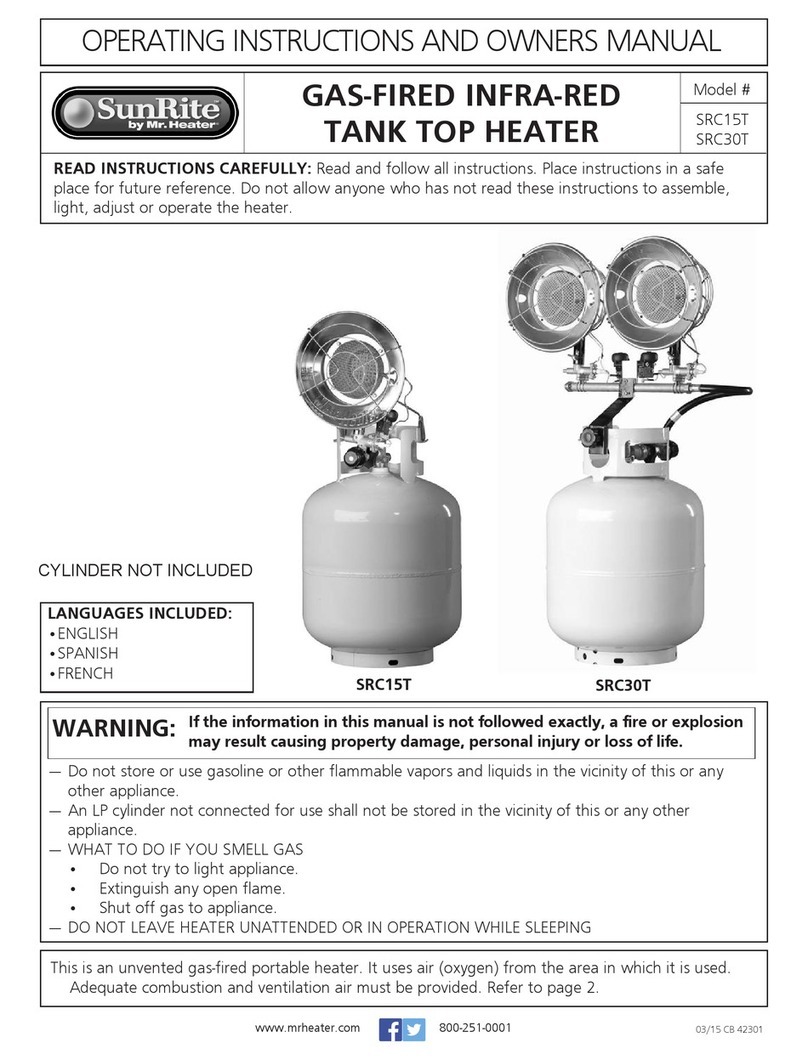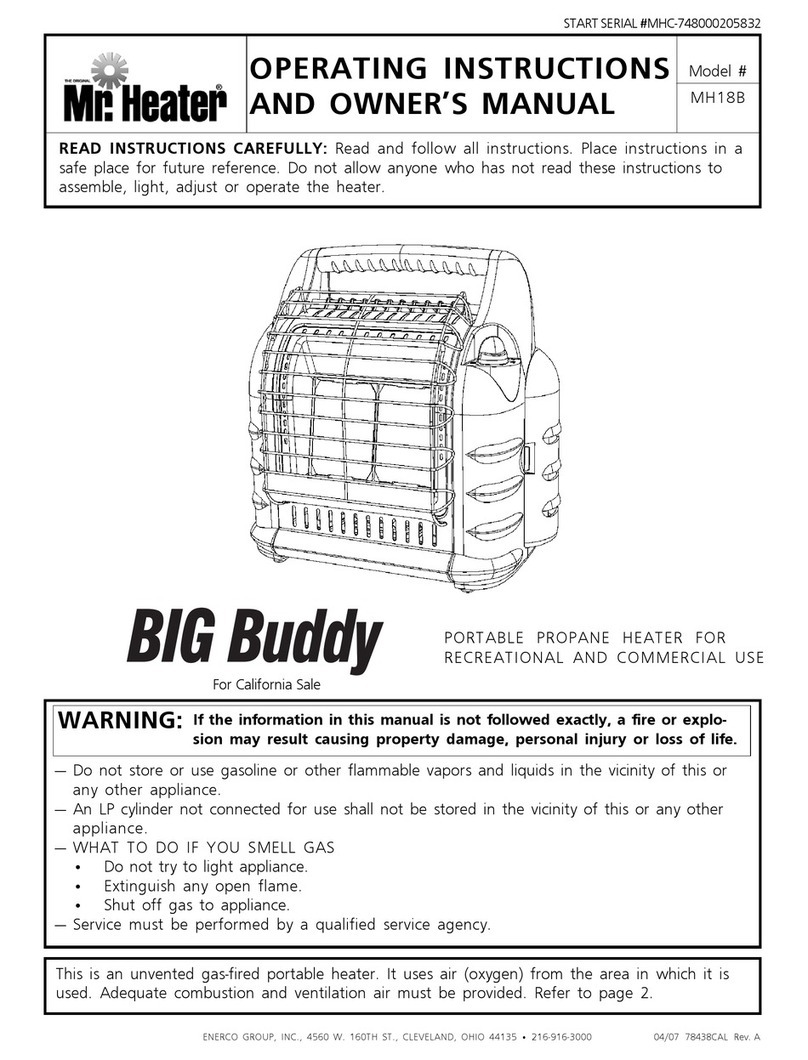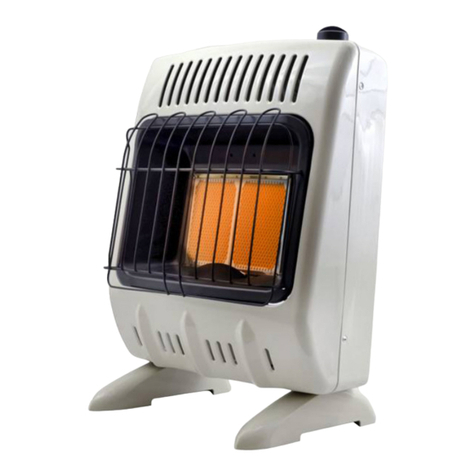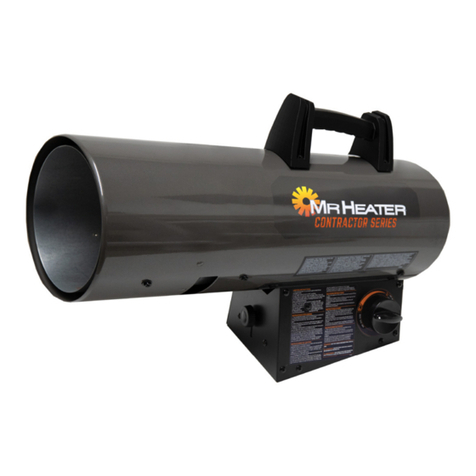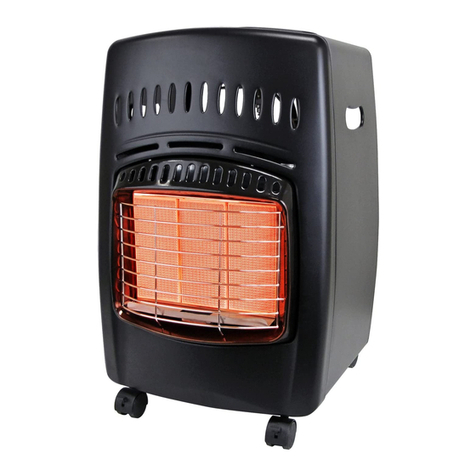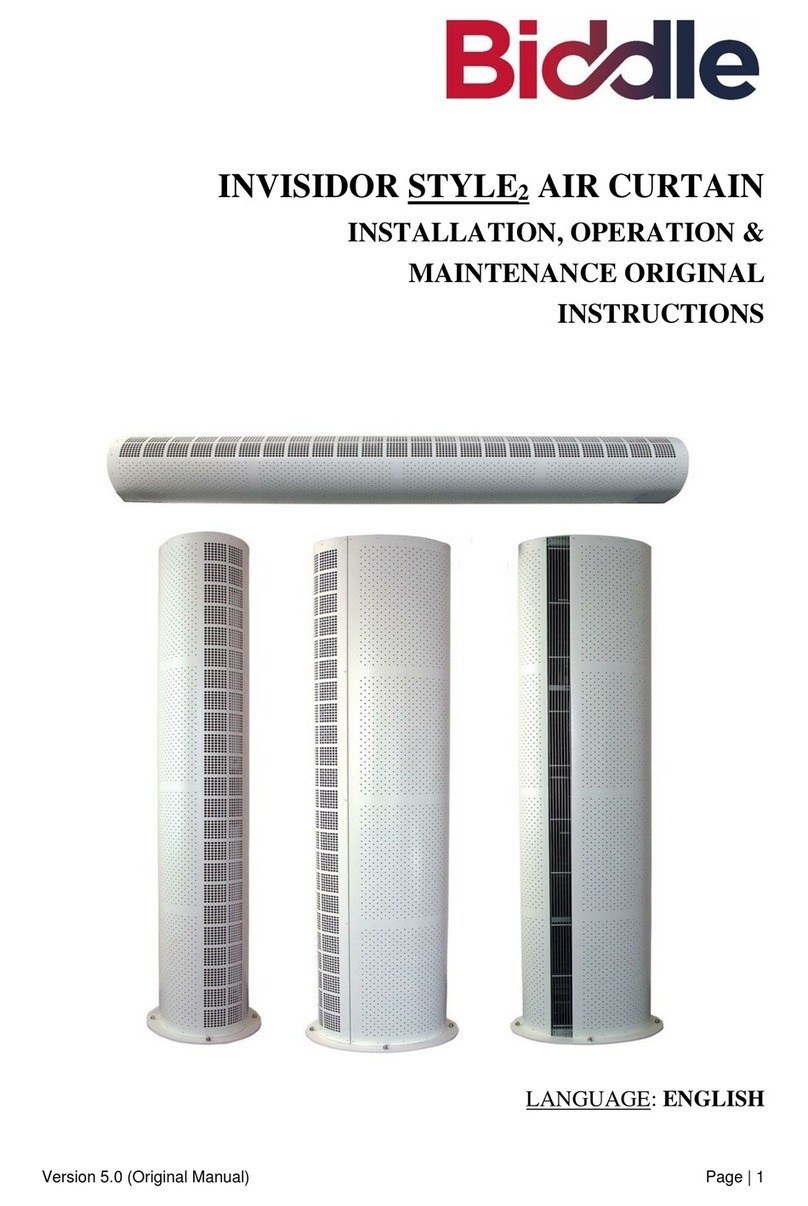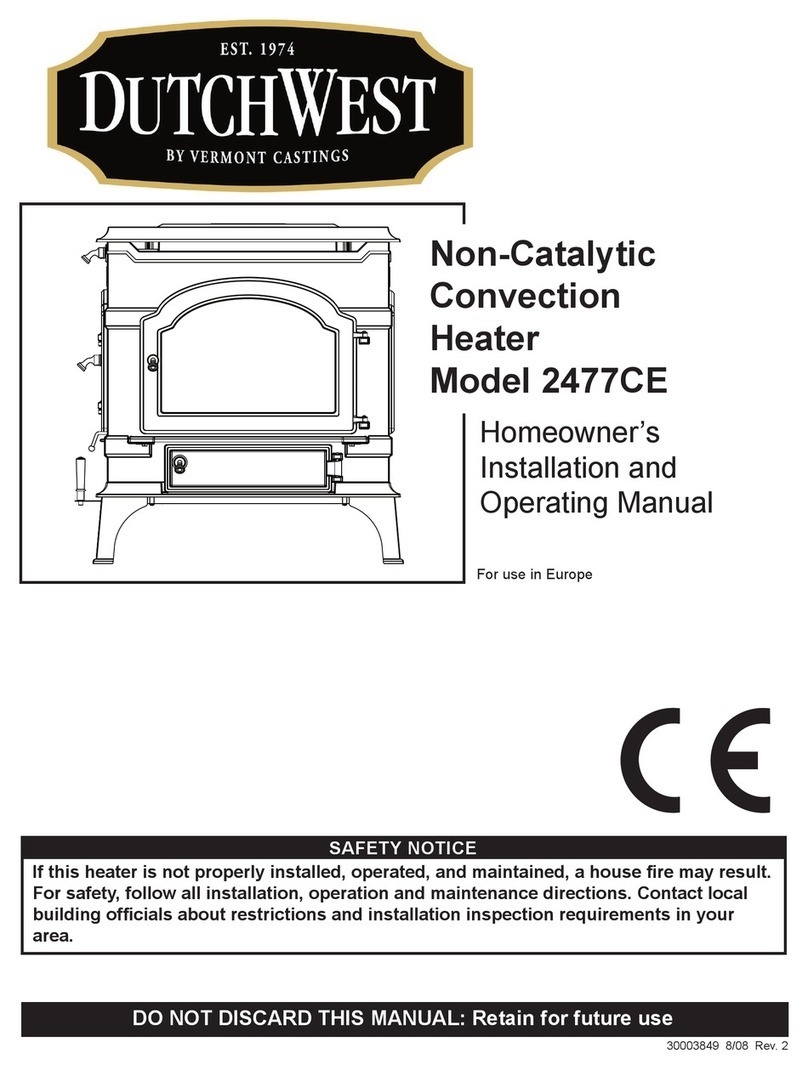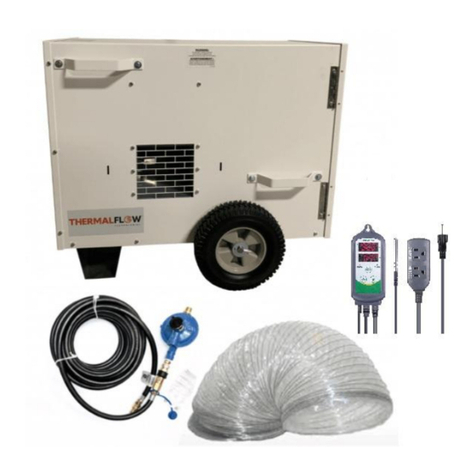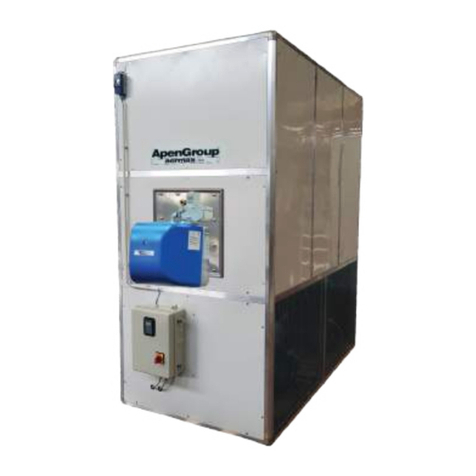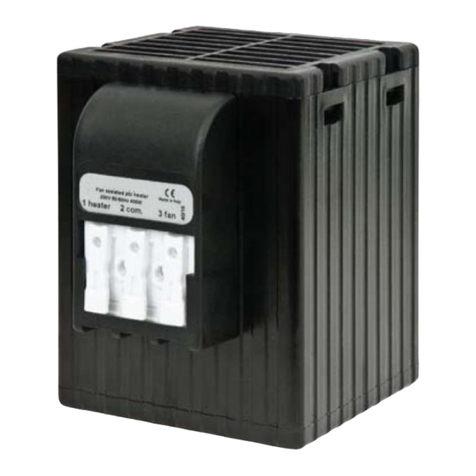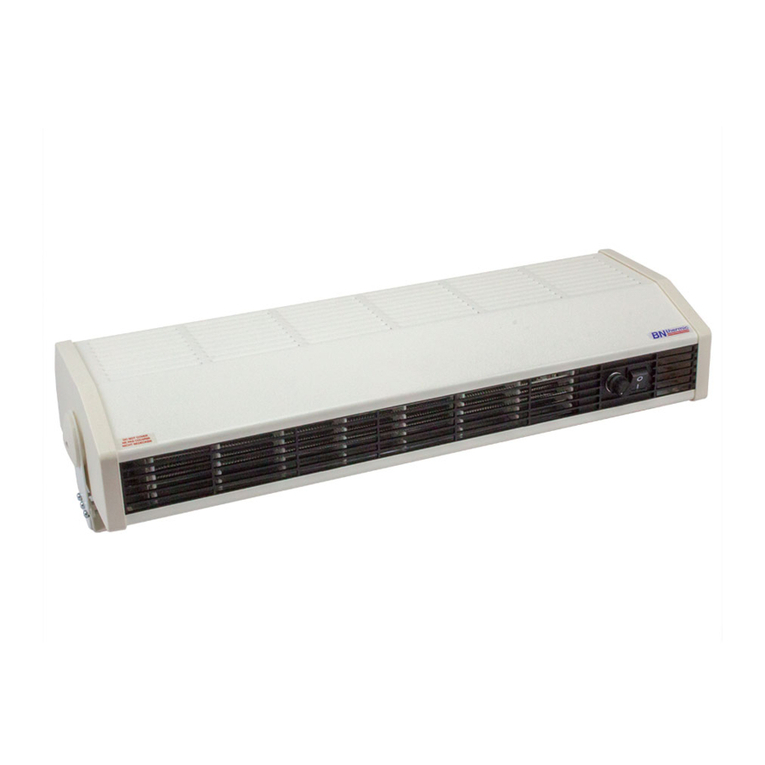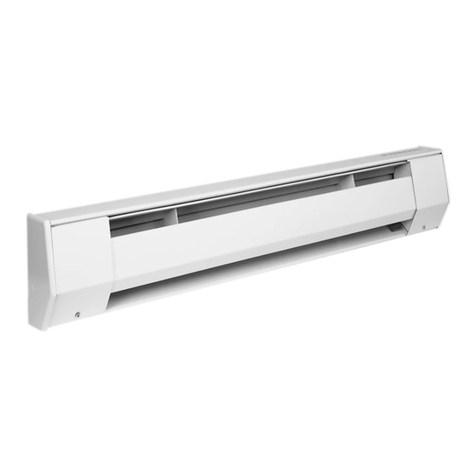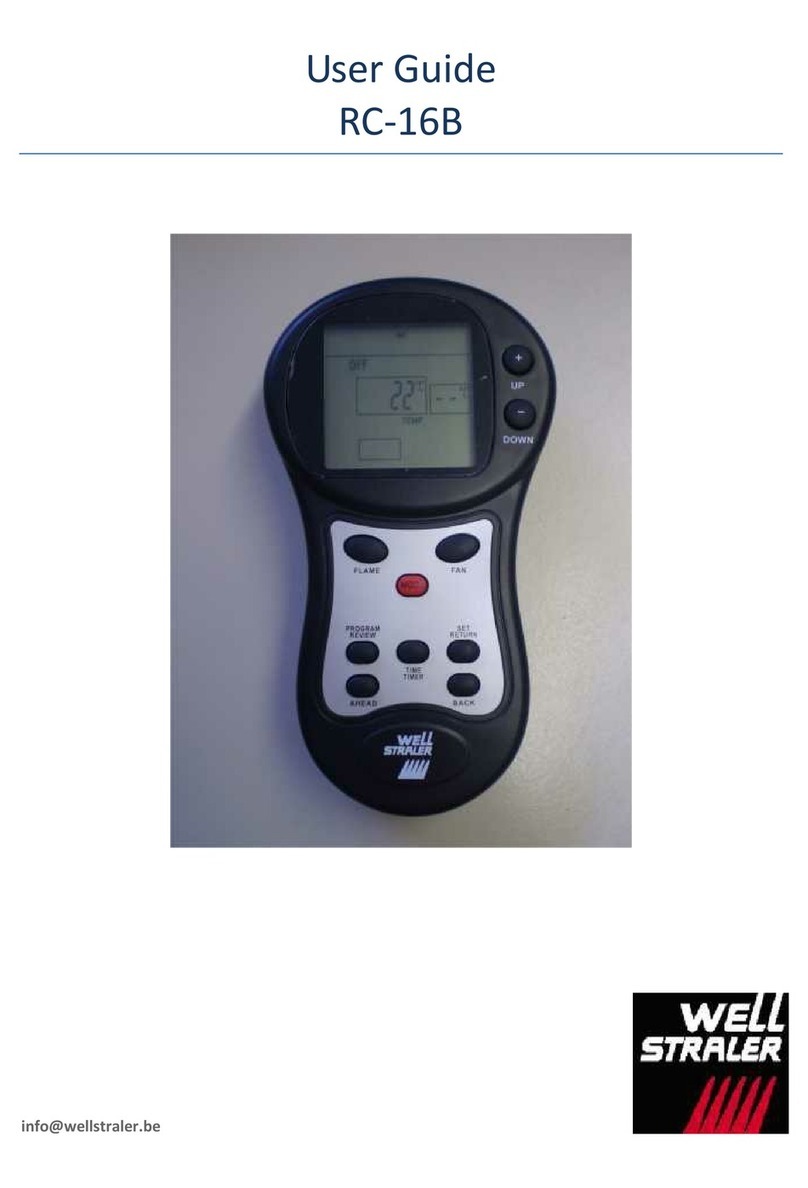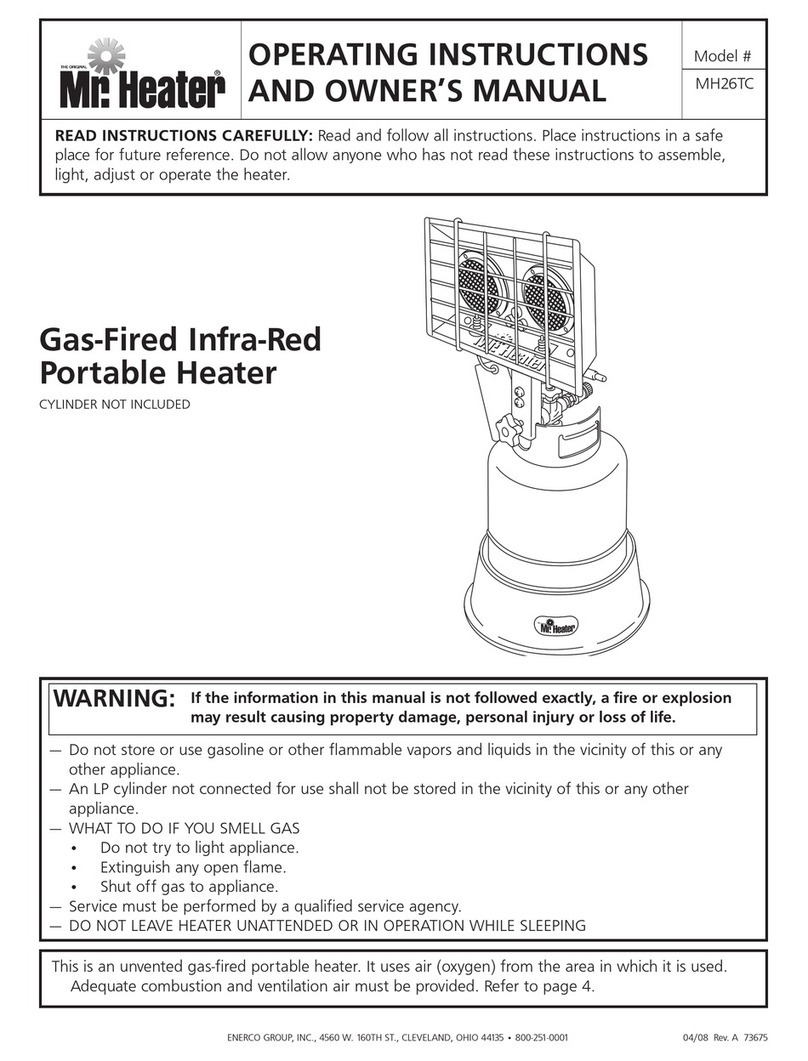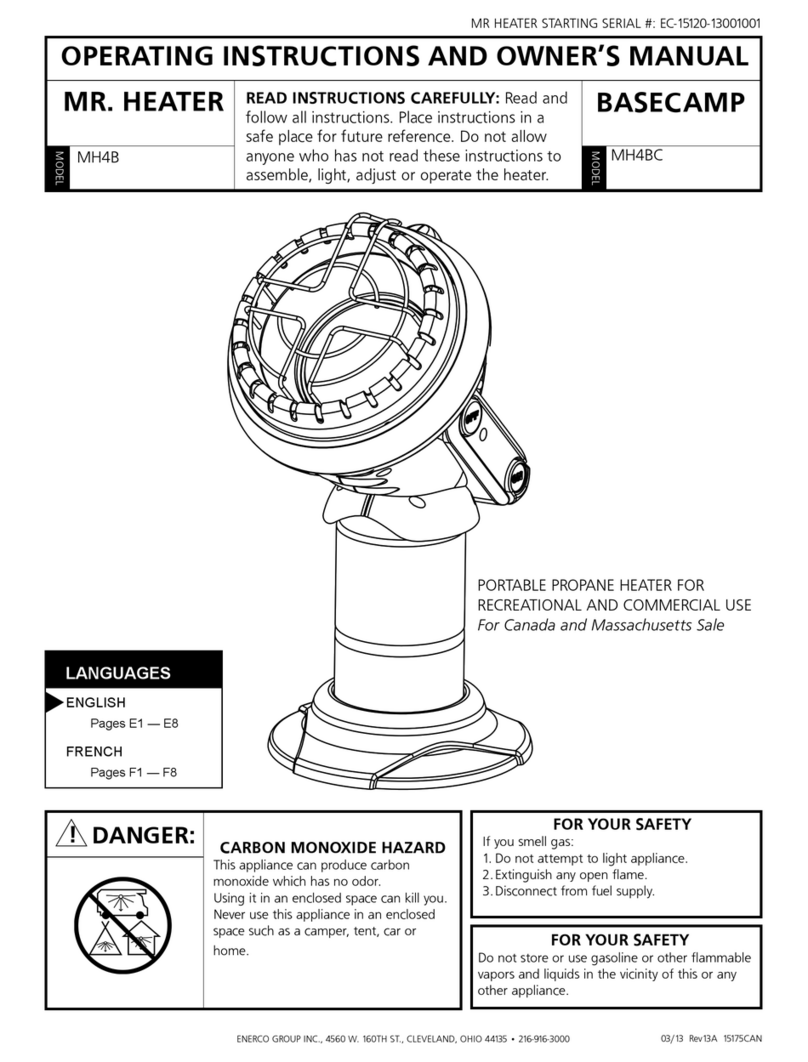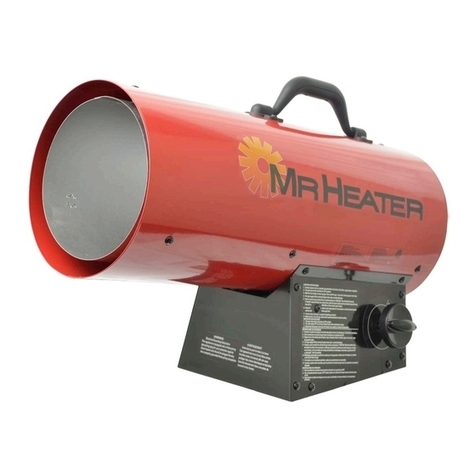
5Installation Instructions and Owner’s Manual
Mr. Heater | Universal Unvented Room Heater
NEVER LEAVE THE HEATER UNATTENDED WHILE BURNING!NEVER LEAVE THE HEATER UNATTENDED WHILE BURNING!NEVER LEAVE THE HEATER UNATTENDED WHILE BURNING!
Figure 2
Figure 3
INSTALLATION
WARNING: Rework worksheet,
adding the space of the adjoining
unconfined space. The combined space
must have enough fresh air to supply all
appliance in both spaces.
*IMPORTANT: Do not provide
openings for inlet or outlet into attic. If
attic has a thermostat-controlled power
vent, heated air entering the attic will
activate the power vent.
IMPORTANT: Vent-free heaters
add moisture to the air. Although
this is beneficial, installing heater in
rooms without enough ventilation air
may cause mildew to form from too
much moisture. See Fresh Air for
Combustion and Ventilation, pages
4 through 5.
WARNING: Any change to this
heater or its controls can be dangerous.
WARNING: A qualified service
person must install heater. Follow all
local codes.
Confined Space and Unconfined
Space
The National Fuel Gas Code, NFPA
54/ ANSI Z223.1 defines a confined
space as a space whose volume is less
than 50 cubic feet per 1,000 Btu per
hour (4.8 m3per kW) of the aggregate
input rating of all appliances installed in
that space, and an unconfined space as
a space whose volume is not less than
50 cubic feet per 1,000 Btu per hour
(4.8 m3per kW) of the aggregate input
rating of all appliances installed in that
space. Rooms communicating directly
with the space in which the appliances
are installed*, through openings not
furnished with doors, are considered a
part of the unconfined space.
*Adjoining rooms are communication
only if there are doorless passageways or
ventilation grills between them.
Determining The Type Of
Heater Location Space
Use this method to determine if you have
a confined or unconfined space.
Note: The space includes the room in
which you install heater plus any adjoining
rooms with doorless passageways or
ventilation grills between the rooms.
1. Find the volume of the space by
multiplying room length x width x
height.
Example: Space size 18ft (length) x 18ft.
(width) x 8ft. (height) = 2592
If additional ventilation to adjoining room
is supplied with grills or openings, add
the volume of these rooms to the total
volume of the space.
2. Divide the space volume by 50 cubic
feet to determine the maximum Btu/
hr the space can support.
Example: 2592 cu.ft. (volume of space)
/ 50 cu.ft. = 51.8 or 51,800 (maximum
Btu/hr the space can support)
3. Add the Btu/hr of all the fuel-
burning appliances in the space such
as, Vent–free heater, Gas water
heater, Gas furnace, Vented gas
heater, Gas fireplace logs, and other
gas appliances*
*Do not include direct-vent gas
appliances. Direct-vent draws
combustion air from the outdoors
and vents to the outdoors.
Ventilated
Attic
To Attic
To Crawl
Space
Inlet Air
Ventilation Crawl Space
Ventilation Air
Outlet Air
Ventilation Grills into Adjoining
Room-Option 2
Or remove
door into
Adjoining
Room-
Option 3
Ventilation
Grills into
Adjoining
Room-
Option 1
(30.5 cm) 12”
12” (30.5 cm)
Example:
Gas water heater 40,000 Btu/
hr
Vent Free Heater + 20,000 Btu/
hr
Total =60,000 Btu/hr
4. Compare the maximum Btu/hr the
space can support with the actual
amount of Btu/hr used.
Example: 51,800 Btu/hr (maximum
Btu/hr the space can support)
60,000Btu/hr (Actual
amount of Btu/hr used)
The space in the above example is a
confined space because the actual
Btu/hr used is more than the maximum
Btu/hr the space can support.
You must provide additional fresh
air. Your options are as follows:
a. Rework worksheet, and the space
of an adjoining room. If the extra
space provides an unconfined space,
remove door to adjoining room or add
ventilation grills between the rooms.
See Ventilation From Inside Building
(Fig. 2)
b. Vent room directly to the outdoors.
See Ventilation From Outdoors (Fig.
3).
c. Install a lower Btu/hr heater if lower
Btu/hr size makes room unconfined.
If actual Btu/hr used is less than
the maximum Btu/hr the space can
support, the space is an unconfined
space. You will need no additional
fresh air ventilation.
Ventilation Air
Ventilation from Inside Building
This fresh air would come from
an adjoining unconfined space.
When ventilation to an adjoining
unconfined space, you must provide
two permanent openings: one within
12” of the ceiling and one within 12”
of the floor on the wall connecting
the two spaces (see options 1 & 2 of
figure 2). You can also remove door
into adjoining room (see option 3, Fig
2). Follow the National Fuel Gas Code
NFPA 54/ ANSI Z223.1, Section 5.3,
Air for Combustion and Ventilation
for required size of ventilation grills or
ducts.

